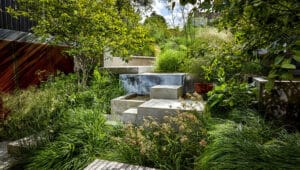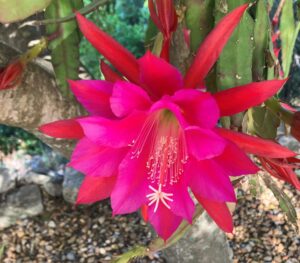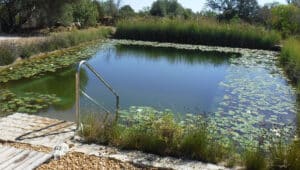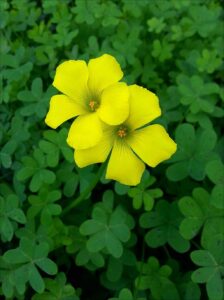“The best time to plant a tree is twenty years ago. The second best time is now.”
Social Benefits
We would all agree that trees make life more pleasant. Imagine how you feel when you are standing in a grove of trees or woodland.
Indeed, it is not just their beauty and their compliment to nature that inspires us, but also their presence in other ways too. For example, it is shown that hospital patients can recover from surgery more quickly when their hospital room offers a view of trees; neighbourhoods will campaign to prevent trees from being removed to ensure the environment of their community; and we note the heroic efforts and investments of individuals and organisations that save very large or historic trees.
The stature, strength, and endurance of trees give them a cathedral-like quality, and their potential for long life, means that they are frequently planted as living memorials. We often become personally attached to trees that we, or those we love, have planted. Even small trees can have the same impact for those that care for them.
Communal Benefits
Even though trees may be private property, their size often makes them part of the community as well. With proper selection and maintenance, trees can enhance one property without infringing on the rights and privileges of neighbours; and even add to the environment for everyone’s enjoyment.
We often forget that trees serve in architectural and engineering functions. They provide privacy, emphasise views, or screen out objectionable views. They reduce glare and reflection, and can even direct pedestrian traffic. Trees provide background to soften, compliment, or enhance our homes and work places.
Environmental Benefits
When chosen carefully from local regional varieties, trees will help control the environment in which we live by moderating climate, improving air quality, conserving water, and feeding and harbouring wildlife.
A tree, or group of trees can help control the climate by moderating the effects of sun, wind, and rain. We all feel cooler when we stand in the shade of trees and can admire the filtering light of the sun as it passes through the leaves.
Trees can affect wind speed and direction. The more compact the foliage on the tree or group of trees, the greater the influence of the windbreak as well as the screening from the neighbour or road.
Trees help direct water; they intercept it, store some of it, and thereby reduce storm runoff and the possibility of flooding.
Our air quality is notably improved as the leaves of a tree filter the air we breathe by removing dust and other particles. The leaves absorb carbon dioxide from the air to form carbohydrates that are used in the plant’s structure and function, whilst absorbing other air polluants—such as ozone, carbon monoxide, and sulphur dioxide—and then give off oxygen.
By planting trees and shrubs, we return to a more natural, less artificial environment. Birds and other wildlife are attracted to the area, and the natural cycles of plant growth, reproduction, and decomposition continue, both above and below ground.
Economic Benefits
Directly, a tree shading a home can reduce air-conditioning costs, and heating costs can be reduced when a home has a windbreak.
Indirectly, one mustn’t forget the economic benefits of trees are even greater for our community and the world in general.
The other benefit to homeowners is that trees increase in value from the time they are planted. By investing in the landscaping around a home sooner rather than later, the greater the real estate value will be as the garden matures. Trees, particularly, make an important statement about a property and the type of people that live there.
Considerations for planting a Tree
Time of year – the best time to plant trees is now, or early spring before budding. Weather conditions are cool and allow plants to establish roots in their new location before spring rains and summer heat stimulate new top growth.
Tree selection – Think right tree, right place. Make sure that you choose a quality specimen, ideally indigenous, from a reputable nursery. Remember that the word ‘nursery’ means that any uprooted trees have been given extra care for a period of time to ensure that when replanted they will thrive. Cheaper plants may not be prepared for the transition, and will therefore be at greater risk. Take into account tree growth when choosing what species to plant. Think about how the tree will look 20 or even 50 years from now as well as when it is planted. Consider its mature height, width, and overall shape before making your final choice.
Site selection – Choose a location with the right soil, space, and light conditions for your tree. Will your tree need shade or sun? Wet soil or dry? What insects, pollutants, drought conditions, or other environmental factors might affect its survival potential? Avoid planting large trees under or near power lines. Also remember that tree roots spread well beyond their branches; so pick a planting spot with plenty of room for underground development, too.
Obviously, the advice of a good garden centre, and ideally a professional planting team is essential to ensure that your money is well spent.
The most appropriate trees for the Algarve garden include the Carob Ceratonia siliqua; Olive (Olea europaea); Umbrella Pine (Pinus pinea); Aleppo Pine (Pinus halepensis) – do not listen to those who tell you there is a danger from the catapillar as pine trees across the Algarve are now treated biologically and the infestation has been under control for some time; Oak (Quercus) and Cork Oak (Quercus suber). Remember that the Cork Oak is ideal for acid soil, and Quercus Oak is better for alkaline soil.
Fruit trees also flourish well in the Algarve and there are many different varieties whose leaves, fruit and flowers add much texture to a garden, but be aware, to achieve perfect fruit they sometimes require a lot of attention!
























